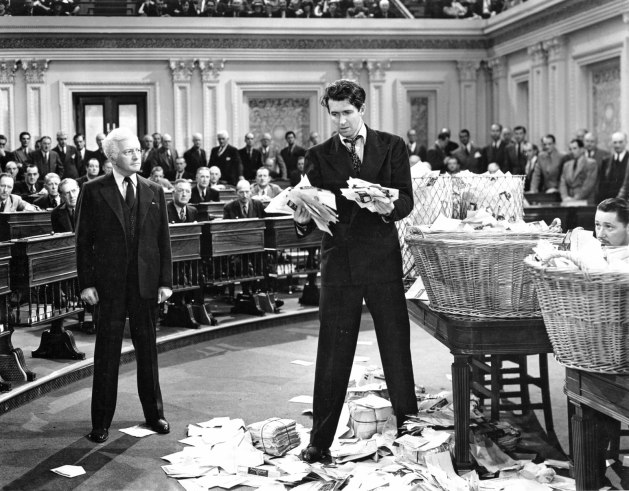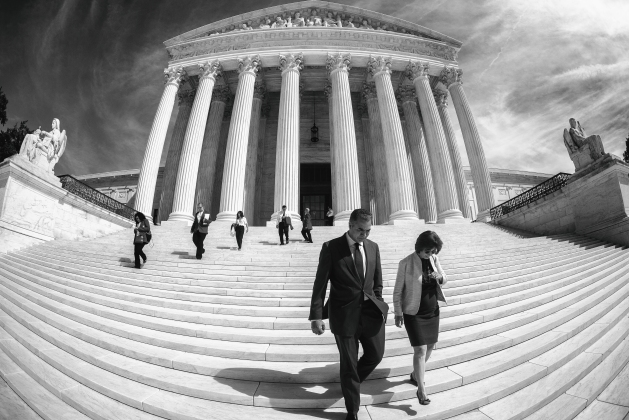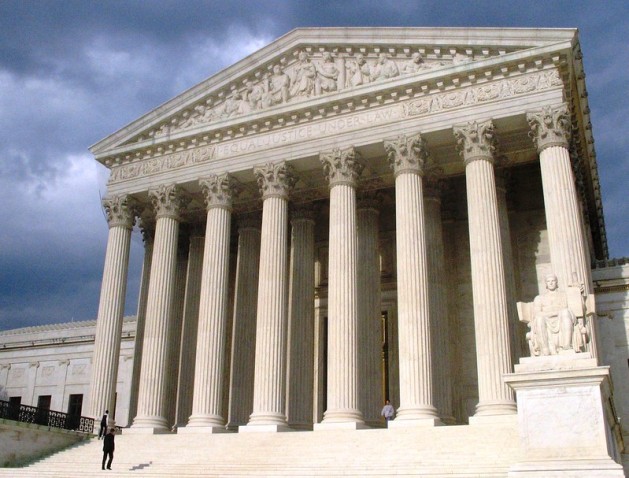
Sarah Palin. Photo (cc) 2021 by Gage Skidmore.
Previously published at GBH News.
For the past several years, a few conservative judges have been saying they’re ready to do what was once unthinkable: reverse the libel protections that the press has enjoyed since the 1964 New York Times v. Sullivan decision.
The threat began with Supreme Court Justice Clarence Thomas, who wrote in 2019 that he believed it was time to return libel jurisdiction to the states. It accelerated in early 2021, when Laurence Silberman, an influential judge on the U.S. Court of Appeals for the District of Columbia, called Times v. Sullivan “a profound mistake.” And it reached a crescendo of sorts last fall, when Supreme Court Justice Neil Gorsuch said that he, too, thought the time had come to revisit what has been settled law for nearly 60 years.
Soon an opportunity may arrive for Thomas and Gorsuch to act on their words — and it comes in the unlikely person of Sarah Palin, the former Alaska governor and Republican vice presidential candidate whose caustic attacks on “the lamestream media” presaged the Age of Trump.
Palin is suing The New York Times for libel, claiming that a 2017 editorial tying her incendiary rhetoric to the 2011 shooting of then-congresswoman Gabrielle Giffords — a crime that also claimed the lives of six people — was false and defamatory. Jury selection in the long-delayed trial had been set to begin this past Monday in U.S. District Court. Then we learned that Palin had tested positive for COVID-19. “She is of course unvaccinated,” said Judge Jed Rakoff. Yes, of course. And the proceedings have been delayed until Feb. 3.
There is no question that there were mistakes in the Times editorial, published after a gunman shot and injured several members of Congress, including U.S. Rep. Stephen Scalise. The Times compared the event to the Giffords shootings and noted that Palin’s political action committee had published a map on Facebook with gunsights over the districts of several members of Congress it hoped to defeat — including Giffords.
After that, things went awry. First, the editorial originally stated that the map targeted “electoral districts that put Ms. Giffords and 19 other Democrats under stylized cross hairs.” In fact, the map targeted only the districts, not the members themselves. More consequentially, the editorial tied the map to the shootings, stating: “In 2011, when Jared Lee Loughner opened fire in a supermarket parking lot, grievously wounding Representative Gabby Giffords and killing six people, including a 9-year-old girl, the link to political incitement was clear.” (You can read the original Times editorial here, at the Internet Archive; the revised and corrected version is here. You can see the map here.)
There’s an old saying that bad cases make bad law, and this may prove to be a bad case. Palin may be an unsympathetic figure, but the Times is the epitome of an arrogant, out-of-touch institution — the very symbol of the liberal establishment. Worse, its editorial really did falsely claim that the Palin map led directly to the Giffords shootings. In fact, there is no evidence that Loughner, the mentally ill gunman, ever even knew about Palin’s ad.
So why does this matter? Under the Times v. Sullivan standard, Palin, as a public figure, can’t win her suit unless she is able to show that the Times acted with “actual malice” — that is, that it knew what it had published was false or strongly suspected it was false, a standard known as “reckless disregard for the truth.”
In fact, as Bill Grueskin wrote in an in-depth overview of the case for the Columbia Journalism Review last fall, there is more than ample evidence that the Times acted out of sloppiness, not venality. The then-editorial page editor, James Bennet, added the errors while he was editing the piece, apparently oblivious to the actual facts. (Bennet’s tenure came to an end in 2020 after he ran an op-ed by U.S. Sen. Tom Cotton calling for military force against Black Lives Matter protesters. It turned out that Bennet hadn’t even stirred himself to read Cotton’s screed before publication.)
The whole point of the Times v. Sullivan decision is to protect the media from libel actions brought by public officials and public figures on the basis of inadvertent or careless mistakes, which is what seems to be at issue in the Palin case. But will a jury see it that way?
A couple more points about the Palin case.
First, I haven’t seen much emphasis in pretrial coverage on the Times’ original description of the gunsights on Palin’s map as being over the members of Congress (suggesting that photos of them were used) rather than over their districts. It will be interesting to see how much Palin’s lawyers make of that once the trial begins.
Second, and more substantively, is that in order for a libel suit to succeed, the plaintiff must prove what was published about them was false and defamatory. And here’s where I find myself wondering how strong a case Palin actually has. The most significant falsehood in the Times editorial had nothing to do with anything that Palin or her PAC said or did; rather, it was the assertion that Loughner was incited to violence by the Palin map.
It remains an undeniable fact that Palin’s PAC published a map with gunsights over the districts of the 20 Democrats, accompanied by such belligerent rhetoric as: “We’ll aim for these races and many others. This is just the first salvo in a fight to elect people across the nation who will bring common sense to Washington. Please go to sarahpac.com and join me in the fight.”
Given that, how can Palin claim that the Times published anything false about her? What she did was mind-bogglingly irresponsible, and I’m not sure why it matters that her actions did not lead to any actual violence.
I put the question to a couple of First Amendment experts. One, Boston lawyer Harvey Silverglate, said that the Times’ (mostly) truthful description of Palin’s actions should cut against Palin’s libel claims. “Since the Times accurately described what Palin did,” Silverglate told me by email, “it would not matter whether it actually incited violence.
Taking a different view was Justin Silverman, a lawyer who is executive director of the New England First Amendment Coalition. “Just because Loughner didn’t use the map as motivation, [that] doesn’t mean that readers of the NYT weren’t told that he did — which arguably is the same as being told that Palin incited the violence and is responsible for that violence by publishing her map,” he said in an email. Silverman added: “By incorrectly saying that Loughner was motivated by the map, isn’t the NYT also incorrectly saying that Palin incited Loughner by publishing it?”
Nevertheless, Silverman said the Times should prevail if it is able to prove that its errors resulted from “sloppy journalism” rather than actual malice.
Which brings us back to where we started. Regardless of whether Palin wins her case, it seems likely that it will begin to wend its way through the appeals process — and perhaps to the Supreme Court.
Historically, conservative as well as liberal justices have supported strong First Amendment protections. But now we have two justices who appear ready to modify or overturn a vitally important precedent. And we are already seeing signs that the six conservative justices may be willing to overturn longstanding precedents such as Roe v. Wade, the 1972 case that guarantees the right to an abortion.
Powerful institutions are held to account by a powerful press. Without Times v. Sullivan, news organizations are likely to shy away from investigative reporting for fear of losing libel cases because of carelessness or unavoidable mistakes.
It would be a bitter irony if Sarah Palin, of all people, proves to be the vehicle through which the media are taken down.










